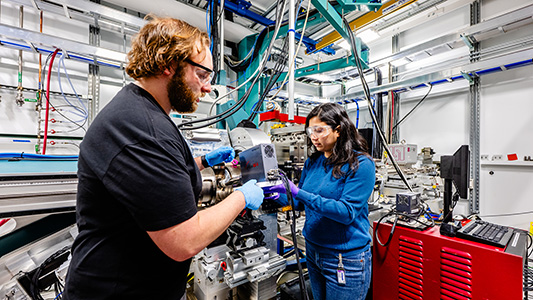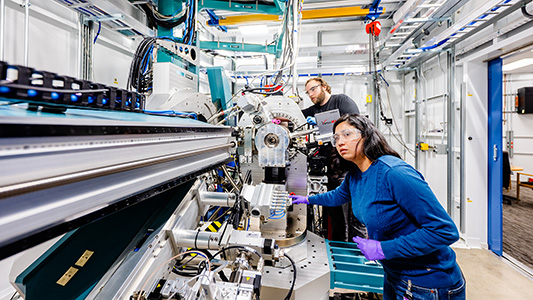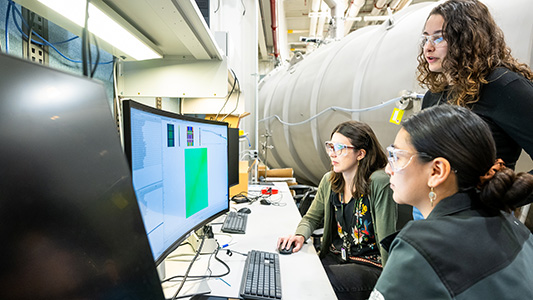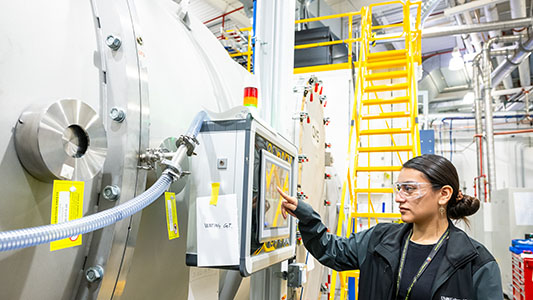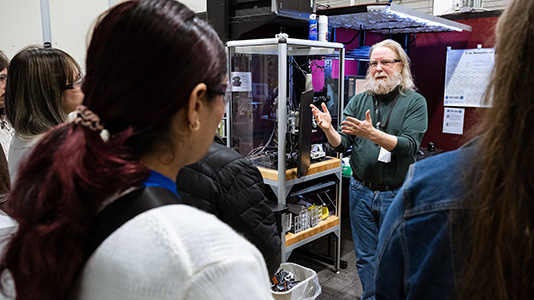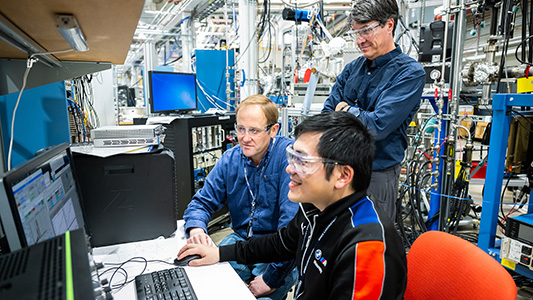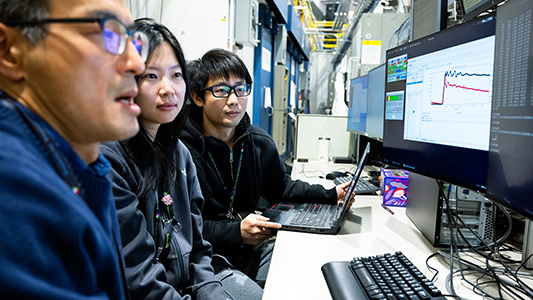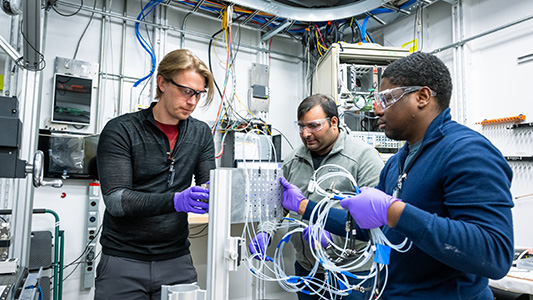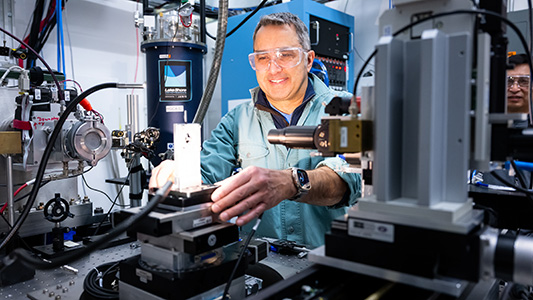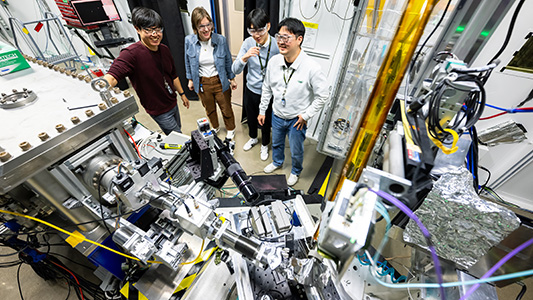As the Advanced Photon Source prepares to enter its second user science run of 2025, it’s a good time to look back on the first run of the year.
From January to May, the APS hosted users at 41 of the 72 beamlines, and many other beamlines began moving through the commissioning process to return to scientific experiments after their upgrades. We welcomed users to two more of the new feature beamlines: POLAR at 4-ID and the Coherent Surface Scattering Imaging (CSSI) beamline at 9-ID. Users and beamline staff explored the new capabilities powered by the extraordinary new X-ray beams of the upgraded APS and saw some striking results.
Below is a series of images from the first user run of 2025. It’s an exciting time and will only get more exciting as additional beamlines return to operation over the coming months.
